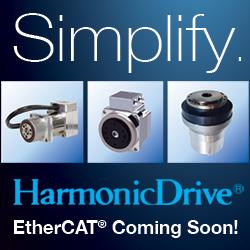Vigilus Mobile Camera Platform Invited To Exhibit At Inaugural Security Robotics Zone At ESX In Nashville
Adept Receives $2.6 Million Order From CASTEC International Corp., Taiwan for Robotics to be Used in High Precision Assembly Workcells for Independent Semiconductor Manufacturing Service Provider
SDI Intelligrated to host students from Brazil for summer internships
QinetiQ North America to Provide Command and Control Support to Space and Naval Warfare Systems Command
PRE-TEC Becomes RIA Certified Robot Integrator
5D Robotics Collaborates with Segway and DRS Technologies to Lighten U.S. Army Soldier Workload
Raytheon to Support Ground Elements of Global Hawk UAS
EPFL Develops Cheetah-Cub Robot
Unmanned Aircraft Run the Gamut in Paris
Ocean Server Technology, SeeByte Perform Rapid Environmental Assessment
Ellison Technologies Automation Celebrates its 30th Anniversary
Faster, More Precise Airstrikes Within Reach
ABB increases top payload of IRB 1600 from 8 kg to 10 kg, delivering superior performance to heavier part applications
AV&R BECOMES THE WORLD'S LARGEST ENGINEERING FIRM SPECIALIZING IN ROBOTICS FOR THE AEROSPACE INDUSTRY
ABB names Ulrich Spiesshofer as CEO
Records 10096 to 10110 of 12418
First | Previous | Next | Last
Industrial Robotics - Featured Product

Harmonic Drive - Coming Soon! Integrated Actuators with EtherCAT
Robotics and Automation - Featured Company

